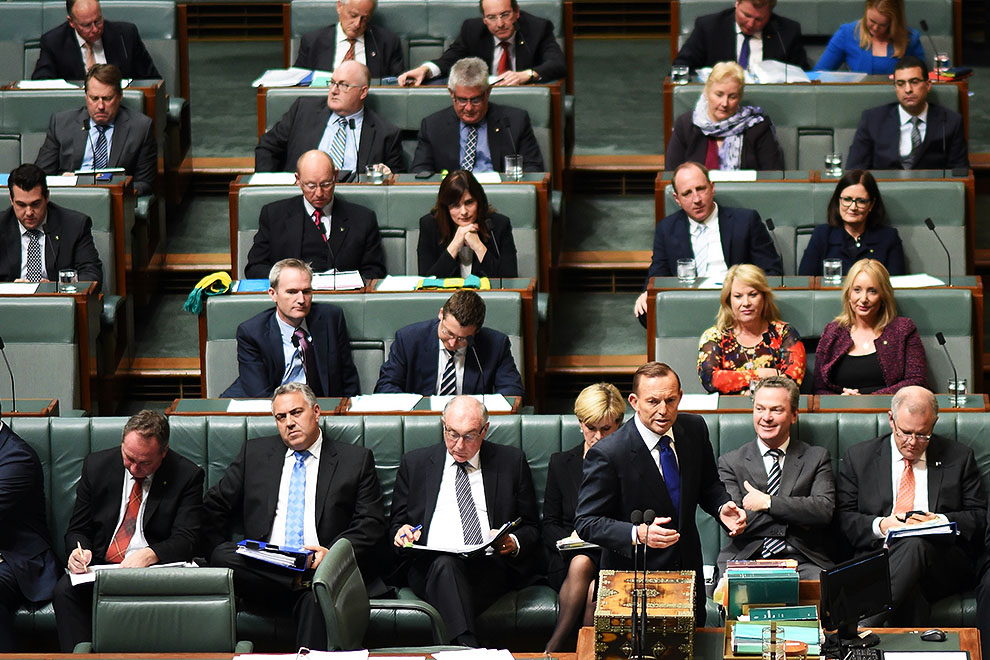First published September 2015
It’s five years since I circulated a paper to my colleagues in the parliamentary Liberal Party advocating a quota system to increase the number of women MPs and senators. Quotas hadn’t always been my preference, but after years of seeing only small increases in the number of Liberal women entering parliament, I felt stronger initiatives were needed. I still do.
The proposal attracted little acceptance or support, and there has been no significant rise in the number of women in Australian parliaments in the half-decade since then. It’s time for the current party leadership, both in parliament and in the organisation itself, to deal seriously with this anomaly.
Australia can be proud of being an early leader in moves towards equality for women. But it’s important to remember that while we were among the first countries to give women the right to stand for parliament (in 1902), we were among the last to finally see a woman elected – forty-one years later, in 1943.
The slow delivery of that early promise may be why Australia has not progressed to levels reflective of the broader composition of our population. Britain and New Zealand elected female prime ministers earlier than Australia did, and the United States now sees a woman making a competitive bid for the presidential nomination of her party. Australia deserves accolades, though, for our own recent firsts. Among them are the women deputy leaders of both major political parties, a woman as governor-general, women as senior cabinet ministers and several women as state premiers.
But we should be moving well beyond “firsts.” Many capable women should be progressing through party preselections to parliament and beyond. Nor should the underrepresentation of women in parliament be seen as a women’s issue alone: it goes right to the heart of representative and responsible governance.
According to the most recent figures released by the Parliamentary Library in May, just 26.7 per cent of members of the House of Representatives are women – the same percentage as in 2007. In the Senate, the figure is 40.8 per cent, up from 35.5 per cent in 2007. Contrary to Paul Keating’s remark about “unrepresentative swill,” the Senate is much more representative of broader community demographics.
New South Wales (30.1 per cent), Victoria (36.4) and Tasmania (36.0) are the only states in which more than 30 per cent of lower house members are women, and this tends to reflect the quota system the Labor Party has implemented over the past decade. The two territories, the Australian Capital Territory and the Northern Territory, do better, and among the upper houses only New South Wales and South Australia are below 40 per cent. The total female participation rates in Australian parliaments are 30.2 per cent in the lower houses and 35.9 per cent in the upper houses.
While Australian businesses and industry still fall far short of the goal of equality, they have taken practical steps to identify, mentor and promote women into roles of responsibility and leadership. Businesses are moving an increasing number of women into senior roles because they understand the tangible benefits that follow.
There is a myth that the imposition of quotas or targets means dropping the bar for achievement levels – that we will only find the best candidates by focusing only on “merit.” But this ill-defined criterion has its own flaws. As Pip Marlow, managing director of Microsoft Australia, wrote in the Australian Financial Review recently, “Believing your organisation hires and promotes on merit is not enough. Why? It turns out judging merit is not an exact science. Such decisions are frequently swayed by bias, because many decision makers have set ideas of what leaders look like and, quite often, those stereotypes are male.” For Marlow, finding and promoting talent is part and parcel of embracing a diverse workforce.
What of the Liberal Party’s performance in this area? Party leaders (mainly male) have spoken positively about the need to ensure that more women enter parliament, but few have made concrete suggestions to achieve this. During John Hewson’s leadership (1990–94) a Liberal Women’s Forum was established to find and promote female candidates; this had some success, but a number of the new MPs elected when the Coalition returned to government were in marginal seats and lost their seats when John Howard’s electoral success receded in 1998.
Since then, there has been little concerted action. Even the federal and state women’s councils have done little or nothing in this area. Dame Elizabeth Couchman, who agreed to bring the Australian Women’s National League into the infant Liberal Party in 1944 on the condition of equal representation of women at every level in the Victorian Liberal Party, would be mortified. Participation by women within the party organisation itself has stayed high because of quota-style arrangements there, but parliamentary representation has stalled.
The prime minister, speaking recently at a Liberal Party state council, said encouraging words about rectifying this situation, but I and many other women are looking to him to put forward concrete proposals to address the gender deficit. If the “merit” standard isn’t providing greater numbers, wouldn’t logic tell us to try another approach?
It’s time now to introduce quotas to boost the number of Liberal women in parliament and give the other half of Australia’s population a voice at the highest levels of decision-making. •




